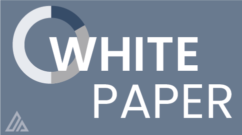Keep vs. Discard: Lessons Learned from a Pandemic Year
As we approach the one-year mark of the start of our pandemic-related office closure and the transition to working remotely, we took the time to reflect as a team on the last year. While there are aspects we look forward to leaving behind (looking at you, Zoom-home-schooling!), we found that there are some practices we want to keep as we move towards post-pandemic work life.
Keeps:
Flexible Work Model
The first trend we hope carries forward – for our company and beyond – is the flexibility in working location and hours. While our firm has always had an open mentality to balancing work and personal life, this wasn’t the case across many other companies and industries. From our experience over the past year, in both our firm and in our partner companies, we’ve seen that for many positions – and subject to outstanding communication – hybrid work models can work well and provide everyone with flexibility to balance personal, family, and work priorities. This could mean a combination of in-office and remote work, as well as the ability to flex some working hours depending on your schedule needs. While most of us at Montage Partners have a short commute, we know that’s not the case for many, and the option to avoid an hour-plus travel morning and night has been a game changer to productivity and work-life balance. For us, the ideal moving forward will be a hybrid environment where we don’t plan to scrap our physical offices (more on that below).
Virtual Meetings
With the move to virtual working came a rise in virtual meetings, which in our view is largely another net positive. Our industry relied heavily on travel prior to the pandemic, often necessitating several in-person visits to a company prior to a transaction, and regular in-person board meetings throughout the partnership. With travel off the table for an extended period of time, we’ve learned the value that can be gained from a virtual video meeting, both in our industry and in those we partner with. For our transaction team, or for our partner companies’ sales teams, for example, a lot of the positives from an in-person meeting can be accomplished over video. There is still a personal touch, putting a face to a name, reading the body language of your peers, and the ability to feel an emotional connection. A two -hour management presentation is now really two hours out of someone’s day, rather than a full day of travel sandwiching that two-hour meeting. We believe this will make it easier to close deals – in any business – as there are now less logistical hoops to jump through. Video calls will continue to provide a richer way to communicate, and in some areas will replace or reduce travel.
Limiting Meeting Times
Related to virtual meetings, we’ve found another meeting-related trend that we would like to keep in the future: limited meeting times and limited number of meetings. While we know this isn’t the case in every company or every industry, we’ve noticed in our firm that we’re all more conscious of how time-consuming and draining meetings can be now that they are all virtual. This has caused us to be more respectful and considerate when planning meetings internally and with external partners and service providers – and when deciding whether or not a meeting is even needed (we’ve all had those meetings that could’ve been communicated via email!). We plan to keep this in mind even as some meetings start to transition to in-person once again.
Reducing Paper Waste
Along with saving time, we’ve found the pandemic has also saved paper. During virtual meetings, some of us that previously preferred hand-written notes found it simpler to take notes electronically. Emailed document drafts were also easier to review electronically. Not every person owns a printer at home, so physical copies of many documents or signatures, or physical checks were less rigidly demanded. While the trend towards reducing printing and paper existed prior to 2020, it helped push some stragglers forward, toward electronic invoices, checks, and signatures. We plan to continue this environmentally-friendly practice when we move back into the office.
Refocused Safety Practices
Across our partner companies and in many that we’ve gotten to know since the pandemic began, we’ve noticed a refocusing of safety practices. Some are specific to an industry – such as better awareness of distancing in a manufacturing facility – while others are universal, such as washing your hands regularly. The most important might be the simple reinforcement of the concept that you should stay home if you are sick. While many places of work had this policy prior to COVID-19, the majority of work cultures still favored (or even rewarded) “pushing through it.” Now, especially combined with the ability of many to work remotely, we hope this practice is more ingrained and accepted.
Preparing for the Unexpected
The final “keep” we felt was important is a mentality: being prepared for the unexpected and being adaptable. This is necessary for us, and for our partner companies that all face varying risk based on industry and physical location. A pandemic, a wildfire, a cold or heat wave, or other disasters both big and small can strike at any time for many of our partner companies (and for us), and we all have a sharper mindset now when it comes to preparing for or reacting to major unexpected events. While we don’t encourage paranoia, we’ll want to maintain this mindset going forward. Even when major challenges occur, we’ve also seen that they can be overcome, and major change can be effected when everyone on the team is committed. We’ve all improved at challenging the status quo, and there’s no downside to keeping this mentality even as we breathe a sigh of relief that the end of the pandemic is nearing.
Discards:
Full-time Remote Work
As we said at the beginning of this post, it’s no surprise that not everything from the past year is a keeper. For us, that means one of the first things to go will be completely virtual or remote work. While we’ve already discussed the benefits of the flexible model, it was impossible to escape some efficiency losses in communication and idea exchange while fully separated for a year. Never being in the same room as your team members also dilutes the company culture and means the integration of new team members (we onboarded two during the pandemic) is suboptimal. All of that combined meant that while the full-time work-from-home model has gone fine during the pandemic, we’re ready to leave it behind. Instead, we hope to adopt a balanced hybrid, utilizing both environments in ways to optimize efficiency, engagement, culture, and quality of life. And we’re definitely looking forward to our first post-pandemic team-building activity!
Too Many Video Calls
Similarly, the video calls in the “keep” column also have a caveat: not every meeting has to be a video call. Some topics are fine for just a phone call. With the jump to video calls to replace in-person meetings, we found that it was also easy to overcomplicate simple interactions; topics that would have been a quick phone call prior to 2020 all of a sudden came with a calendar marker and Teams video link. With the return to in-office interactions, we anticipate this will die down. We’re lucky to be in an age when we have so many options for communication – popping your head into a colleague’s office, an email, chat via phone, video call, or travel-related in person meetings – so once all options are available again, it will be a bonus to have the ability to choose the most appropriate.
Not Taking Vacation
The last item we hope to discard is indicative of the work culture across much of the country (especially in fast-paced industries): no vacation time. The U.S. has a reputation for “living to work,” and even in companies that have generous PTO plans, many employees don’t take advantage of the time off due to fears of getting behind or not being taken as seriously as someone who is always in the office. While our company has never valued face time like this, we realized that in the thick of COVID-related shutdowns and restricted travel, even our team members rarely took time off in the last year. We have and will continue to encourage our team members and management partners to return to a good work-life balance, which includes time off to reset.
While we still have some work to get out of the worst of the pandemic, it looks like there is finally a light at the end of this year-long tunnel. As vaccinations continue to become more widely available, offices begin to plan reopening, and more and more activities and restaurants adapt or reopen, we feel well-prepared to transition back into a more normal rhythm of life. We’ll keep the best of the lessons we learned, and eagerly discard the rest, knowing that we are well-positioned to continue our firm’s growth moving forward.




